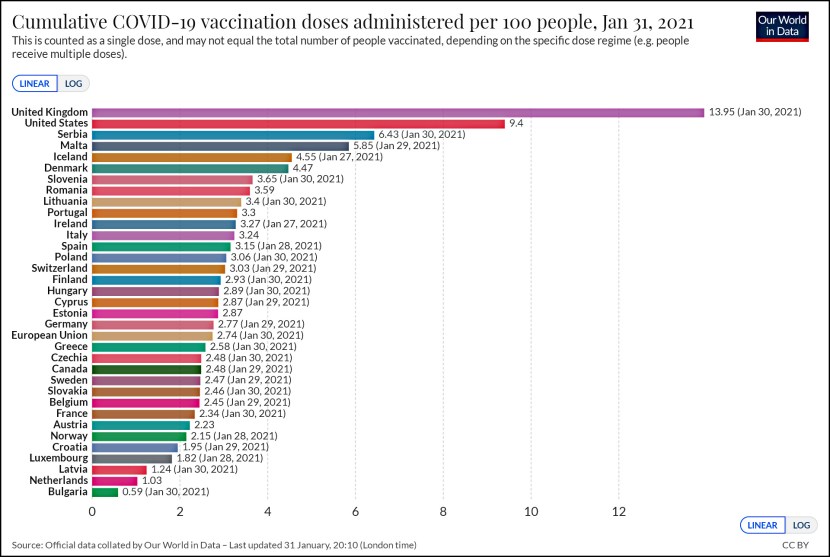A fiscal “multiplier” is a measure of how effective government spending is. If it’s greater than 1, it means that a dollar of federal spending  produces more than a dollar of increased economic activity. So to evaluate how effective a stimulus package is, we need to know what multiplier to use.
produces more than a dollar of increased economic activity. So to evaluate how effective a stimulus package is, we need to know what multiplier to use.
Today we get estimates from two sources. First up is Robert Barro, who has done a detailed study of the effect of increased defense spending:
World War II tends to dominate….the defense-spending multiplier that applies at the average unemployment rate of 5.6% is in a range of 0.6-0.7….It increases by around 0.1 for each two percentage points by which the unemployment rate exceeds its long-run median of 5.6%. Thus the estimated multiplier reaches 1.0 when the unemployment rate gets to about 12%.
To evaluate typical fiscal-stimulus packages, however, nondefense government spending multipliers are more important. Estimating these multipliers convincingly from U.S. time series is problematical, however….The effects of tax rates on GDP growth can be analyzed from a time series we’ve constructed….a one-percentage-point cut in the average marginal tax rate raises the following year’s GDP growth rate by around 0.6% per year.
So: at the current rate of unemployment the multiplier for defense spending is about 0.85. For nondefense spending, Barro guessed a few months ago that it’s approximately zero, but this time around he just says that he doesn’t know. And tax cuts tend to be fairly effective.
Next up is a team of CEPR economists who have done a cross-national comparison of fiscal multipliers in 45 different countries:
For the US….The impact multiplier is 0.64 and the long-run cumulative multiplier is 1.19….pre-1980 multipliers are considerably larger than the post-1980 multipliers. The post-1980 multipliers are just 0.32 on impact and 0.4 in the long-run.
….In practice, a sizable component of President Obama’s package consists of government investment, as opposed to government consumption….The multipliers are 2.31 on impact and 1.83 in the long run.
So: for the post-1980 period, the multiplier is some average of 0.4 and 1.83, depending on how much of the stimulus bill is consumption and how much is investment. Roughly speaking, then, it’s probably around 1.1 or so if they’re evenly balanced.
I’ll be fascinated to read learned commentary on this. Barro’s work strikes me as pretty shaky, since it’s dominated so heavily by an extreme event many years ago (World War II). On the positive side, he does take into account the fact that the multiplier ought to be higher as the economy gets worse and unemployment goes up.
The CEPR results are interesting, and the cross country dataset seems like a novel and worthwhile approach. On the other hand, they produce only a single number that doesn’t depend on economic conditions. But that doesn’t seem right. In good economic times, it makes sense that the multiplier is low, since increased government spending probably just crowds out private spending. During a deep recession, when monetary policy is already at its lower bound and lots of people are out of work, government spending ought to be more effective. A single number doesn’t capture that.
All told, then, I’m not sure how much either of these studies tells us about the size of the multiplier right now. Zero really doesn’t seem very likely, though. Since Obama’s stimulus package was a combination of investment, consumption, and tax cuts, and the unemployment rate is currently 9.7%, I’d guess that these studies taken together suggest an overall long-run multiplier somewhere in the range of 1.0-1.3. But that’s just an amateur swag. Let’s hear from the economists.

















